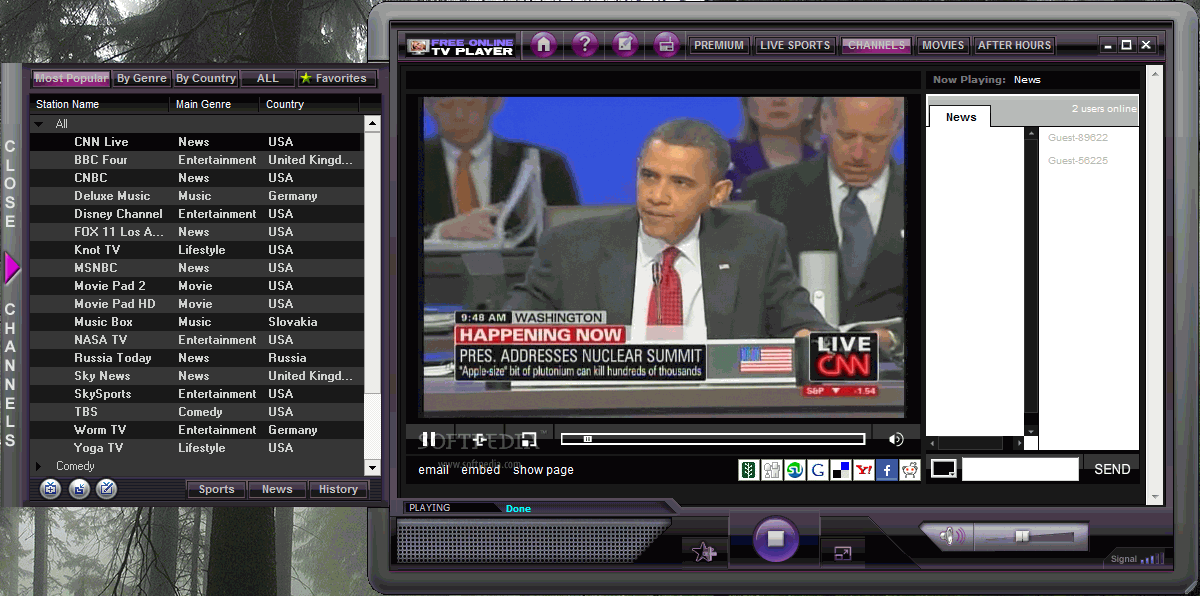
Watch TV shows and movies online. Stream TV episodes of South Park, Empire, SNL, Modern Family and popular movies on your favorite devices. Start your free trial now. Drivers Ed Caroline B Cooney Quizstar.

Contents • • • • • • • • • • • • • • • • • • • • History [ ] The mid 2000s were the beginning of television programs becoming available via the Internet. Began offering select television programs and series in 2005, available for download after direct payment. The video-sharing site also launched in 2005 allowing users to share illegally posted television programs. A few years later television networks and other independent services began creating sites where shows and programs could be streamed online.
Began in the United States as Amazon Unbox in 2006, but did not launch worldwide until 2016., a website originally created for DVD rentals and sales began providing streaming content in 2007. In 2008, owned by NBC and Fox, was launched, followed by tv.com in 2009 and owned by CBS. Adobe Photoshop Cs6 Download With Crack Kickassto. Digital media players also began to become available to the public during this time. The first generation was released in 2007 and in 2008 the first generation streaming device was announced. Amazon's version of a digital media player,, was not offered to the public until 2014. These digital media players have continued to be updated and new generations released. Access to Internet television has evolved from computer and television access, to also include mobile devices such as smartphones and tablet computers.
Apps for mobile devices started to become available via app stores in 2008. These allow users to view Internet television on mobile devices that support the apps. In 2017 YouTube launched, a streaming service that allows users to watch live television programs from popular cable or network channels, and record shows to stream anywhere, anytime.
After 2006, Internet television services began to switch from using peer-to-peer to the streaming method. After 2010 traditional cable and satellite television providers began to offer Internet television services such as, owned by Dish Network, which was unveiled in January 2015., another satellite television provider launched their own internet television service,, in 2016., a type of Internet television receiver, took over the television market after 2010. As of 2015 smart TVs are the only type of middle to high-end television being produced.
As of 2017, 28% of US adults site streaming services as their main means for watching television, and 61% of those ages 18 to 29 site it as their main method. As of 2018, Netflix is the World's Largest Internet TV Network, and also the World's Largest Internet Media and Entertainment company with 117 million paid subscribers, and by revenue and market cap Elements [ ] Internet television is a type of. 'Over-the-top' (OTT) is the delivery of audio, video, and other media over the without the involvement of a (such as a provider) in the control or distribution of the content.
Australian Army F88 Manual Transfer here. It has several elements: Content provider [ ] Examples include: • An independent service, such as or,,,,,, or (which specializes in concerts). Main article: delivers television content using signals based on the (IP), through the open, unmanaged Internet with the 'last-mile' telecom company acting only as the (ISP). As described above, 'Internet television' is 'over-the-top technology' (OTT). Both IPTV and OTT use the Internet protocol over a to transmit data, but IPTV operates in a closed system—a dedicated, managed network controlled by the local cable, satellite, telephone, or fiber-optic company. In its simplest form, IPTV simply replaces traditional analog or channels with digital channels which happen to use packet-switched transmission. In both the old and new systems, subscribers have or other that communicates directly over company-owned or dedicated leased lines with central-office servers.
Packets never travel over the public Internet, so the television provider can guarantee enough local bandwidth for each customer's needs. The Internet protocol is a cheap, standardized way to enable two-way communication and simultaneously provide different data (e.g., TV-show files, email, Web browsing) to different customers. This supports DVR-like features for television: for example, to catch up on a TV show that was broadcast hours or days ago, or to replay the current TV show from its beginning. It also supports —browsing a catalog of videos (such as movies or television shows) which might be unrelated to the company's scheduled broadcasts. IPTV has an ongoing standardization process (for example, at the ). This article needs to be updated. Please update this article to reflect recent events or newly available information.
Menu
- ✔ Cyberlink Media Suite 10 Oem Downloadable Software
- ✔ Cnccom Fanuc Programacao
- ✔ Elna Contessa 450 Manual Muscle
- ✔ Pc Translator 2009 Cz Full Auto
- ✔ Return Of The Durruti Column Raritan
- ✔ Echo F1 Speedometer Manual Lawn
- ✔ Ethics And Contemporary Issues 6th Edition
- ✔ Career Day Passport Template Pdf
- ✔ Elsawin Final Code Keygen Software
- ✔ Bossa Nova Bass Lines Pdf Creator
- ✔ Aermotor Windmills Manual - Free Software And Shareware
- ✔ 900 Cau Hoi Thi Nail Phan 4